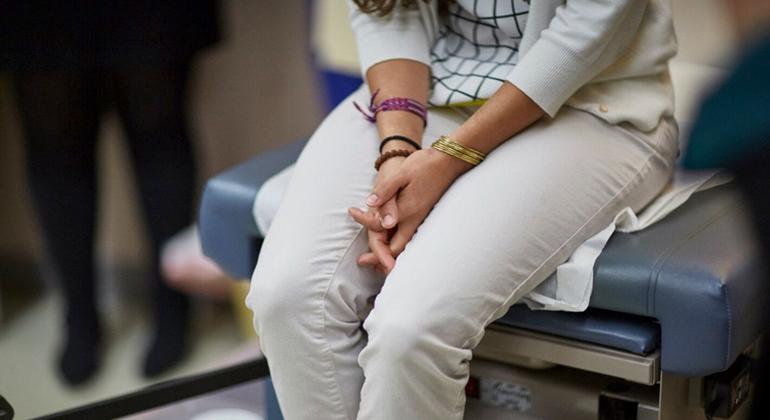

Craig Lissner, the UN health agency’s acting director for Sexual and Reproductive Health and Research, said on Wednesday’s launch, that “being able to obtain a safe abortion is a crucial part of healthcare”.
“Nearly every death and injury that results from unsafe abortion is entirely preventable,” he insisted.
“That’s why we recommend women and girls can access abortion and family planning, when they need them.”
50+ recommendations
To keep women and girls safe, WHO has released more than 50 recommendations spanning clinical practice, health service delivery, and legal and policy interventions to support quality abortion care.
The medical procedure is “simple and extremely safe” when it is carried out using a method recommended by WHO, the UN agency said.
But worldwide, only around half of all abortions take place safely, causing around 39,000 deaths every year and resulting in millions more women hospitalized with complications.
Most of these deaths are concentrated in lower-income countries, said WHO, with over 60 percent in Africa and 30 percent in Asia – and they’re impacting the most vulnerable.
The new guidelines include recommendations on many simple primary care level interventions that improve the quality of abortion care provided.
These include task sharing by a wider range of health workers; ensuring access to medical abortion pills – which mean more women can obtain safe abortion services – and making sure that accurate information on care is available to all.
For the first time, the guidelines also include best practices for telemedicine, which helped support access to abortion and family planning services in many countries, during the COVID-19 pandemic.
Safer access
Alongside the clinical and service delivery recommendations, the guidelines recommend removing medically unnecessary policy barriers to safe abortion, such as criminalization, mandatory waiting times; the requirement that approval must be given by other family members, or institutions; and limits on when during pregnancy, an abortion can take place.
Such barriers can lead to critical delays in accessing treatment and put women and girls at greater risk of unsafe abortion, stigmatization, and health complications, while increasing disruptions to education and their ability to work.
Abortion still criminalized
While most countries permit abortion under specified circumstances, about 20 countries provide no legal grounds whatsoever for abortion.
More than three quarters of all countries have legal penalties for abortion, which can include lengthy prison sentences or heavy fines for people having or assisting with the procedure.
“It’s vital that an abortion is safe in medical terms”, said Dr. Bela Ganatra, Head of WHO’s Prevention of Unsafe Abortion Unit.
“But that’s not enough on its own. As with any other health services, abortion care needs to respect the decisions and needs of women and girls, ensuring that they are treated with dignity and without stigma or judgement. No one should be exposed to abuse or harms like being reported to the police or put in jail because they have sought or provided abortion care.”
Driven underground
Evidence shows that restricting access to abortions does not reduce the number of abortions that take place. In fact, restrictions are more likely to drive women and girls towards unsafe procedures.
In countries where abortion is most restricted, only 1 in 4 abortions are safe, compared to a positive safety record for nearly 9 in 10 in countries where the procedure is broadly legal.
“The evidence is clear – if you want to prevent unintended pregnancies and unsafe abortions, you need to provide women and girls with a comprehensive package of sexuality education, accurate family planning information and services, and access to quality abortion care,” Dr. Ganatra added.